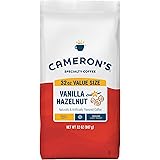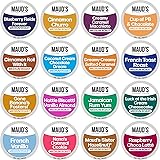Mastering the Art of French Press Coffee: Your Ultimate Brewing Guide
For many coffee aficionados, the pursuit of the perfect cup often leads down complex paths involving intricate machinery and specialized techniques. However, it is often discovered that one of the most rewarding and straightforward methods for brewing exceptional coffee at home is the French press, which, when approached with precision, can unlock a world of flavor nuances. This method, as demonstrated in the video above, is elegantly simple yet capable of producing truly remarkable results, especially when the golden ratio of 1 gram of coffee to 17 grams of water is consistently respected. This seemingly simple calculation, coupled with a four-minute brew time, forms the foundation for a deeply satisfying coffee experience, allowing even novice brewers to achieve connoisseur-level quality.
The beauty of the French press lies in its full immersion brewing process, which allows coffee grounds to steep completely in hot water, extracting a rich spectrum of flavors and aromatic compounds. Unlike other methods that rely on paper filters, the French press utilizes a mesh filter, permitting fine sediments and beneficial coffee oils to pass into the final brew. This characteristic contributes to a fuller body and a more robust taste profile, a quality highly prized by those who appreciate the complete expression of their chosen beans. It truly offers an accessible entry point for anyone wishing to delve deeper into the intricate world of coffee without feeling overwhelmed by technical jargon or expensive setups.
Essential Tools for Elevating Your French Press Coffee Experience
To embark on your journey to brewing superior French press coffee, a few key pieces of equipment are considered indispensable, each playing a crucial role in the outcome of your brew. First and foremost, a quality French press itself is required, with durable glass or stainless steel options being popular choices for their heat retention and longevity. Next, a reliable kettle for heating water to the optimal temperature is essential, as consistent heat is paramount for proper extraction. An electric kettle with temperature control is often preferred for precision, allowing water to reach just off the boil, typically between 195-205°F (90-96°C), before being introduced to the coffee grounds.
Perhaps the most critical, yet often overlooked, tool is a burr grinder. While blade grinders merely chop coffee beans unevenly, a burr grinder crushes them to a uniform size, which is vital for consistent extraction and avoiding both under-extraction (sourness) and over-extraction (bitterness). A scale is also an absolute necessity, transforming the brewing process from guesswork to a precise culinary art by accurately measuring coffee beans and water, ensuring the exact 1:17 ratio is maintained. Finally, fresh, whole bean coffee of your preference completes the ensemble, as pre-ground coffee quickly loses its volatile aromas and flavors, diminishing the potential for an exceptional cup.
The Golden Ratio: Precision Brewing for Unmatched Flavor
The cornerstone of consistently excellent French press coffee is the adherence to specific ratios, which transforms the brewing process from an intuitive act into a precise science. As highlighted in the video, the 1:17 coffee-to-water ratio is considered the “golden ratio” in the coffee world, acting as a reliable benchmark for balanced extraction. This means that for every 1 gram of coffee, 17 grams of water should be used, creating a perfectly concentrated brew that showcases the bean’s inherent characteristics. Such precision is not merely for the sake of exactness; it directly influences the flavor, body, and aroma of the final product, ensuring a delightful cup every time.
For instance, if 45 grams of whole bean coffee is chosen for brewing, as demonstrated, then precisely 765 grams (or milliliters) of hot water would be poured over it to maintain this ideal balance. Achieving this accuracy is where the coffee scale proves its worth, allowing for meticulous measurement that eliminates variability in your daily brew. Alongside this critical ratio, the grind size of the coffee beans is another influential factor; for French press, a coarse grind, resembling something slightly rougher than table salt, is recommended. This coarser grind prevents over-extraction during the full immersion process and ensures the mesh filter can effectively separate the grounds from the liquid, contributing to a clean and robust flavor profile.
The French Press Method: A Detailed Step-by-Step Guide
With your tools prepared and your understanding of the golden ratio solidified, the actual brewing process for French press coffee is refreshingly straightforward, designed to be easily reproducible for consistent results. First, your cup or vessel is placed on the scale and “tared” to zero, then the whole coffee beans are added until the desired weight, such as 45 grams, is achieved. These measured beans are then carefully transferred to the burr grinder and processed to a coarse consistency, ensuring uniform particle size for optimal flavor extraction.
Next, the empty French press itself is positioned on the scale and tared to zero once more, ready to receive the freshly ground coffee. The 45 grams of coarse grounds are gently poured into the bottom of the press, and the scale is reset to zero one final time to prepare for the water addition. Hot water, ideally between 195-205°F (90-96°C), is then slowly poured over the grounds, and simultaneously, a timer is started to track the crucial four-minute brewing period. The hot water should completely saturate all the coffee grounds, initiating the full immersion process where the coffee’s soluble compounds are delicately extracted into the water.
Throughout this four-minute steeping period, the coffee is allowed to brew undisturbed, a critical aspect of the French press method. As the timer nears its conclusion, typically around 3 minutes and 45 seconds, the French press is carefully removed from the scale, and the plunger assembly is gently placed on top of the carafe. Once the full four minutes have elapsed, the plunger is slowly and steadily pushed down, separating the coffee grounds from the rich liquid. This slow, deliberate plunge prevents agitation of the settled grounds and ensures a clean, sediment-free pour, signaling that your delicious French press coffee is ready to be enjoyed.
Dispelling Common French Press Coffee Myths
The French press, despite its simplicity, has unfortunately been subject to several misconceptions that can deter newcomers or lead to suboptimal brewing practices. One prevalent myth suggests that only very dark roasted coffee should be used in a French press, often implying that lighter or medium roasts will not yield enough flavor. This notion is entirely unfounded; the full immersion method of the French press is incredibly versatile and can beautifully showcase the nuanced flavors of any roast level. Indeed, many specialty coffee enthusiasts prefer medium or light roasts in a French press to highlight the intrinsic acidity, sweetness, and complex aromatics often obscured by darker roasts, providing a truly diverse flavor experience.
Another widely held “old wives’ tale” dictates that the coffee in a French press should be stirred or agitated during the brewing process to ensure better extraction. This practice is, in fact, counterproductive and often leads to over-extraction and a bitter, undesirable cup. The coffee grounds are inherently designed to interact with the hot water through diffusion, extracting soluble compounds naturally without external interference. Stirring can cause excessive agitation, accelerating extraction unevenly and introducing an unpleasant astringency or muddiness to the final brew, which diminishes the clarity of the coffee’s natural flavors. It is generally understood that the coffee knows how to brew itself, given the correct parameters.
Unlocking Nuances and Flavors with Your French Press
The French press method is truly a gateway to experiencing the profound depth of coffee, allowing a rich tapestry of flavors to unfold in your cup. Because it does not use a paper filter, the French press permits the natural coffee oils and fine micro-sediments to remain in the brew, contributing to a luxurious mouthfeel and a more complete flavor profile than many other brewing methods. This full-bodied characteristic is especially appreciated when brewing specialty coffees, where subtle notes of fruit, floral, chocolate, or spice might otherwise be filtered out.
By respecting the precise 1:17 ratio and the recommended coarse grind, along with the specific four-minute steep time, the stage is set for an optimal extraction where these hidden nuances are fully expressed. An Ethiopian coffee, such as the Workshop selection mentioned, often presents with bright, floral, or citrus notes, which are beautifully accentuated by the French press’s ability to preserve delicate aromatics. Experimenting with different single-origin beans and understanding how each reacts to this simple yet effective brewing style can truly transform your daily coffee ritual into an exploration of taste. The consistent application of these straightforward French press tips ensures that a high-quality, flavorful cup is always within reach, allowing enthusiasts to truly “geek out” over their coffee at home.







